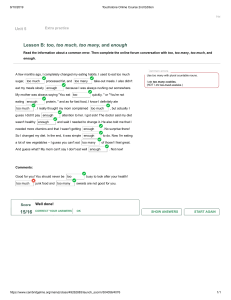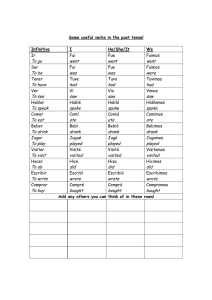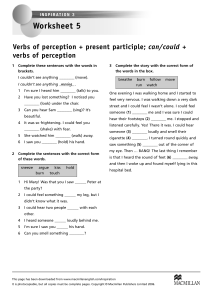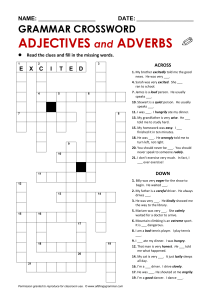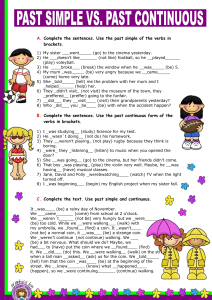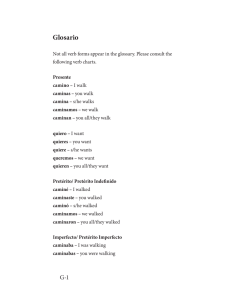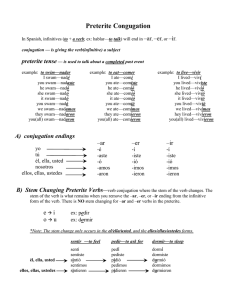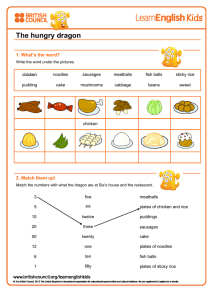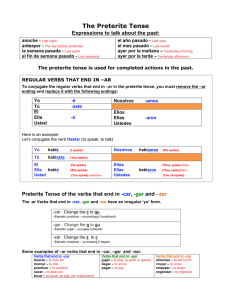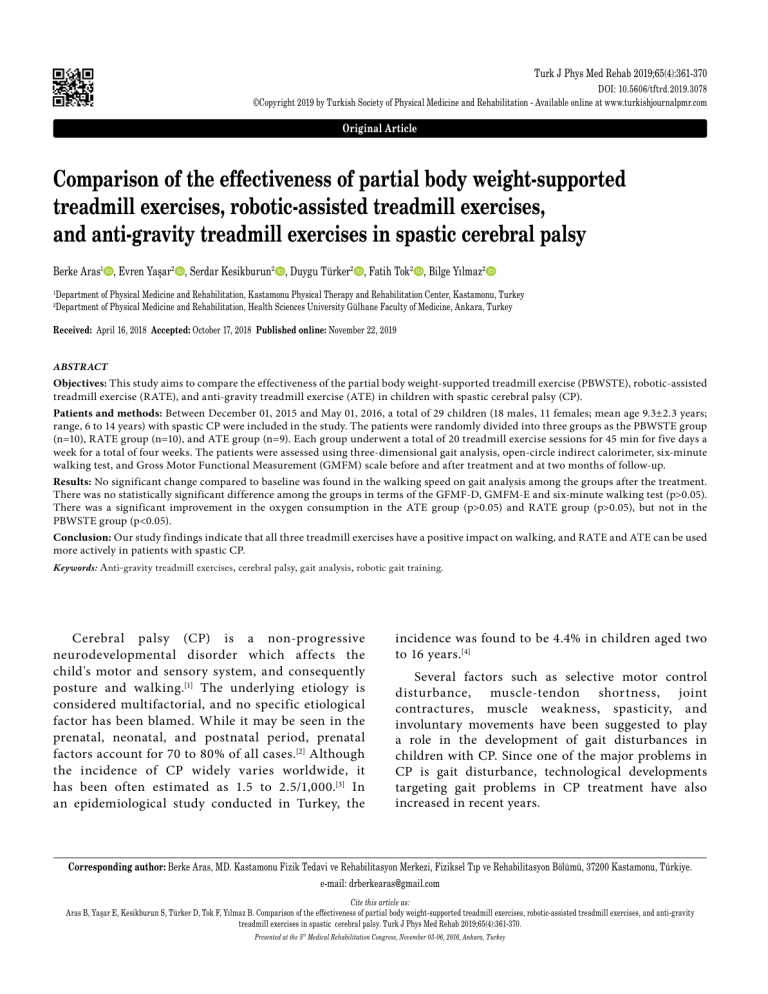
Turk J Phys Med Rehab 2019;65(4):361-370 DOI: 10.5606/tftrd.2019.3078 ©Copyright 2019 by Turkish Society of Physical Medicine and Rehabilitation - Available online at www.turkishjournalpmr.com Original Article Comparison of the effectiveness of partial body weight-supported treadmill exercises, robotic-assisted treadmill exercises, and anti-gravity treadmill exercises in spastic cerebral palsy Berke Aras1, Evren Yaşar2, Serdar Kesikburun2, Duygu Türker2, Fatih Tok2, Bilge Yılmaz2 1 2 Department of Physical Medicine and Rehabilitation, Kastamonu Physical Therapy and Rehabilitation Center, Kastamonu, Turkey Department of Physical Medicine and Rehabilitation, Health Sciences University Gülhane Faculty of Medicine, Ankara, Turkey Received: April 16, 2018 Accepted: October 17, 2018 Published online: November 22, 2019 ABSTRACT Objectives: This study aims to compare the effectiveness of the partial body weight-supported treadmill exercise (PBWSTE), robotic-assisted treadmill exercise (RATE), and anti-gravity treadmill exercise (ATE) in children with spastic cerebral palsy (CP). Patients and methods: Between December 01, 2015 and May 01, 2016, a total of 29 children (18 males, 11 females; mean age 9.3±2.3 years; range, 6 to 14 years) with spastic CP were included in the study. The patients were randomly divided into three groups as the PBWSTE group (n=10), RATE group (n=10), and ATE group (n=9). Each group underwent a total of 20 treadmill exercise sessions for 45 min for five days a week for a total of four weeks. The patients were assessed using three-dimensional gait analysis, open-circle indirect calorimeter, six-minute walking test, and Gross Motor Functional Measurement (GMFM) scale before and after treatment and at two months of follow-up. Results: No significant change compared to baseline was found in the walking speed on gait analysis among the groups after the treatment. There was no statistically significant difference among the groups in terms of the GFMF-D, GMFM-E and six-minute walking test (p>0.05). There was a significant improvement in the oxygen consumption in the ATE group (p>0.05) and RATE group (p>0.05), but not in the PBWSTE group (p<0.05). Conclusion: Our study findings indicate that all three treadmill exercises have a positive impact on walking, and RATE and ATE can be used more actively in patients with spastic CP. Keywords: Anti-gravity treadmill exercises, cerebral palsy, gait analysis, robotic gait training. Cerebral palsy (CP) is a non-progressive neurodevelopmental disorder which affects the child's motor and sensory system, and consequently posture and walking.[1] The underlying etiology is considered multifactorial, and no specific etiological factor has been blamed. While it may be seen in the prenatal, neonatal, and postnatal period, prenatal factors account for 70 to 80% of all cases.[2] Although the incidence of CP widely varies worldwide, it has been often estimated as 1.5 to 2.5/1,000.[3] In an epidemiological study conducted in Turkey, the incidence was found to be 4.4% in children aged two to 16 years.[4] Several factors such as selective motor control disturbance, muscle-tendon shortness, joint contractures, muscle weakness, spasticity, and involuntary movements have been suggested to play a role in the development of gait disturbances in children with CP. Since one of the major problems in CP is gait disturbance, technological developments targeting gait problems in CP treatment have also increased in recent years. Corresponding author: Berke Aras, MD. Kastamonu Fizik Tedavi ve Rehabilitasyon Merkezi, Fiziksel Tıp ve Rehabilitasyon Bölümü, 37200 Kastamonu, Türkiye. e-mail: drberkearas@gmail.com Cite this article as: Aras B, Yaşar E, Kesikburun S, Türker D, Tok F, Yılmaz B. Comparison of the effectiveness of partial body weight-supported treadmill exercises, robotic-assisted treadmill exercises, and anti-gravity treadmill exercises in spastic cerebral palsy. Turk J Phys Med Rehab 2019;65(4):361-370. Presented at the 5th Medical Rehabilitation Congress, November 03-06, 2016, Ankara, Turkey Turk J Phys Med Rehab 362 In this context, repetitive and task-specific therapies are used, such as partial body weightsupported treadmill exercises (PBWSTE), roboticassisted treadmill exercises (RATE), and anti-gravity treadmill exercises (ATE). The PBWSTE reduces the amount of weight riding in the lower extremities using a postural control system consisting of a parachute assembly. The main goal of PBWSTE is to provide a symmetrical walking pattern to patients with rhythmic and normal physiological walking training.[5] Current theories of motor learning have suggested that task-specific repetitive practices improve functional activities such as walking in patients with CP.[6] The RATE is used in the field of rehabilitation to recover or improve walking ability in cases where walking is impaired due to neurological disorders.[7] It is performed on a treadmill in the standing position with a body-supported suspension system. With the help of the robot, it has been claimed that the movement of the legs in the normal walking cycle, send signals to the brain with sensorial perception from the legs and help develop the ability of adaptation in the brain called plasticity.[8] The ATE consists of treadmill limited to a positive pressure environment. The body weight support depends on the amount of air entrapped in the pack and creating lift force. Patients are able to comfortably use the upper limbs during walking exercises and hold on to the parallel bars on both sides, if necessary.[9] The cost-effectiveness of these rehabilitative technologies has not been well-documented, yet. In addition, there are conflicting results regarding their use in CP. In the present study, we aimed to compare the effectiveness of these three treadmill exercises in the treatment of gait disorder secondary to CP. PATIENTS AND METHODS In this prospective study, a comprehensive chart review of the children who were followed in the pediatric rehabilitation unit of Gaziler Physical Therapy and Rehabilitation Research and Training Hospital, Ankara, Turkey was performed to screen eligible subjects for the study between December 01, 2015 and May 01, 2016. Inclusion criteria were as follows: age between six to 14 years; having a diagnosis of CP, having Level II-III according to the Gross Motor Function Classification System (GMFCS), and (being able to ambulate at least 10 meters with or without an assistive device (i.e., walker, or tripod). Exclusion criteria were as follows: having botulinum toxin injection within the last six months, having prior orthopedic surgery within the last one year, having a lower limb length discrepancy of >2 cm, having a fixed contracture or joint deformity, receiving oral medication (i.e., baclofen, tizanidine, or trihexyphenidyl) or baclofen pump to adjust the muscle tone, and having concomitant cardiovascular diseases. Of 48 children who met the inclusion criteria, 18 were excluded as 15 of them received botulinum toxin injections within the last six months, and the parents of three children did not give consent to participate in the study. A total of 30 children were enrolled for the study. Although there was no loss through the study and follow-up in the PBWSTE and RATE groups, one child in the ATE group was excluded due to non-completion of the treatment sessions. Assessed for eligibility (n=48) Excluded (n=18) • Previous botulinum toxin injection (n=15) • Rejected by parents (n=3) Randomized (n=30) Allocated to partial body weight supported treadmill exercise Allocated to robotic supported treadmill exercise Allocated to antigravity treadmill exercise Analyzed (n=10) Analyzed (n=10) Analyzed (n=9) • Withdrawn due to disruption of the treatment (n=1) Figure 1. Study flow chart. Comparison of the effectiveness of the different treadmill exercises in spastic cerebral palsy Finally, a total of 29 children with spastic CP (18 males, 11 females; mean age 9.3±2.3 years; range, 6 to 14 years) were analyzed. The study flow chart is shown in Figure 1. A written informed consent was obtained from each parent. The study protocol was approved by the local Research Ethics Committee of Gulhane Military Medical Academy. The study was conducted in accordance with the principles of the Declaration of Helsinki. Procedures The patients were randomized into three groups using the closed envelope method. All patients took a 20-session walking exercise program for 45 min for five days a week for a total of four weeks using the PBWSTE (Visio Gait, Bama Technology, Turkey), RATE (Lokomat, Hocoma AG, Switzerland), and ATE (Alter-G Inc., Fremont, CA, USA). Each treatment session was performed under the supervision of a physiotherapist. The body weight support was started at 60% and gradually decreased to a level which prevented the collapse of the knee in flexion during the stance phase. The treadmill speed was initiated at the average walking speed according to the children's walking pattern, weight, and endurance and, then, increased to the highest level tolerated. Outcome measures The primary outcome measure was walking speed on three-dimensional (3D) gait analysis data. Temporospatial parameters including walking speed, cadence, stride time, stride length, step time, step length, and single-double support phase were measured using the 3D gait analysis. Open-circuit indirect calorimetry, the six-minute walking test (6MWT), the Gross Motor Function Measure-66 (GMFM-66) part D (standing) and part E (walking-running) were the secondary outcome measures. All measurements were performed before the treatment, immediately after the treatment, and three months after the treatment. Three-dimensional gait analysis of the patients was performed in the gait and motion analysis laboratory of Gaziler Physical Therapy and Rehabilitation Research and Training Hospital. Gait analysis was applied by a single physician for each patient. The 3D gait analysis test was performed using the Vicon 512 (Oxford Metrics, Oxford, United Kingdom) motion analysis system. Data were related to the temporospatial characteristics of the walk. The energy consumption of the children was measured using a mask with an open circuit indirect 363 calorimeter (Vmax 29c, SensorMedics, Yorba Linda, CA, USA) system. After a proper resting period with the face mask, the test was carried out with a walking time of five min at the running speed of the treadmill at its own walking speeds (average 0.70 m/s). It is known that children with CP reach a balanced plateau following a two-min submaximal walk.[10] Therefore, the first two min taken to reach the steady state during a five-min walk was not included in the calculation. The 6MWT was used to assess changes in the walking capacity of the patients. In the test developed by Balke in 1963, the distance the patient took in six min was measured in meters.[11] Before the test, each patient rested for 15 min at the start of the course. The patient was informed about the test and was, then, asked to walk for six min at their own walking speed. Statistical analysis To determine the sample size, the study conducted by Arya et al.[12] on children with CP was used. The primary outcome measure of this study was walking speed on the gait analysis and a 0.12 m/sec difference was considered clinically significant. Accordingly, the sample size was calculated to be at least eight for each group with an error margin of 0.05 and a beta value of 0.20 at 80%. A total of 10 patients were required for each group, taking a dropout rate of 25% into consideration. Statistical analysis was performed using SPSS for Windows version 15.0 software (SPSS Inc., Chicago, IL, USA). Descriptive data were expressed in mean ± standard deviation (SD) for continuous variables, and number and frequency for categorical variables. Conformity to normal distribution was assessed using the Shapiro-Wilk test. Non-parametric tests were used for the data not showing normal distribution. Pre-treatment, post-treatment, and two-month follow-up results were assessed with the Friedman test and the results were considered statistically significant at a p value of <0.05. In cases where statistically significant changes were found within the group, two-up comparisons were made with the Bonferroni corrected Wilcoxon test and the results were considered statistically significant at a p value of <0.017. In the intergroup comparisons, the changes in the parameters examined were evaluated with the Kruskal-Wallis test. When statistically significant changes were found between the groups, two-up comparisons were made with the Bonferroni corrected Mann-Whitney U test and the results were considered statistically significant at a p value of <0.017. Turk J Phys Med Rehab 364 Table 1. Demographic and clinical characteristic of patients RATE group PBWSTE group ATE group n % n % n % Male 6 60.0 6 60.0 6 66.7 Female 4 40.0 4 40.0 3 33.3 p Sex 0.94 Cerebral palsy type 0.98 Hemiplegic 3 30.0 3 30.0 3 33.3 Diplegic 7 70.0 7 70.0 6 66.7 GMFCS level 0.41 Level II 9 90.0 7 70.0 8 88.9 Level III 1 10.0 3 30.0 1 11.1 RATE: Robotic assisted treadmill exercise; PBWSTE: Partial body weight supported treadmill exercise; ATE: Antigravity treadmill exercise; GMFCS: Gross motor functional classification system. RESULTS There was no statistically significant difference in the baseline characteristics of the groups (p>0.05) (Table 1). The CP type was diplegic in 20 (69%) and hemiplegic in nine patients (31%). The GMFCS was Level II in 24 (82.8%) and Level III in five patients (17.2%). Twenty-five children (86.2%) could walk without an assistive device and four (13.8%) could walk with an assistive device (three with walkers, one with tripod). Walking orthotics were used in 24 children (82.8%). No statistically significant difference in the baseline data of gait analysis data, oxygen consumption, 6MWT, GMFM-D and E was detected between the groups (p>0.05). Walking speed on gait analysis showed an increase in all treatment groups, but did not reach a statistical significance in any treatment group (Figure 2). In the ATE group, the increase in cadence, stride length, and stride time were statistically significant, while the increases in the RATE and PBWSTE groups were not statistically significant (p>0.05). The decrease in double support phase was statistically significant in the RATE and ATE groups Pre-treatment Post-treatment Follow-up Walking speed (m/sn) 1.25 1.00 0.75 1.00 0.25 0.00 RATE group PBWSTE group ATE group Figure 2. Walking speed changes of the treatment groups. RATE: Robotic-assisted treadmill exercise; PBWSTE: Partial body weight supported treadmill exercise; ATE: Antigravity treadmill exercise. Comparison of the effectiveness of the different treadmill exercises in spastic cerebral palsy 365 Table 2. Intra-group comparison of gait analysis data Pre-treatment Post-treatment Follow-up n Mean±SD Mean±SD Mean±SD p Walking speed (m/sn) RATE 10 0.5±0.3 0.6±0.3 0.7±0.4 0.172 PBWSTE 10 0.6±0.3 0.7±0.3 0.7±0.4 0.119 ATE 9 0.6±0.3 0.6±0.3 0.7±0.3 0.117 Cadans (step/min) RATE 10 92.8±28.5 102.0±25.3 102.5±26.4 0.061 PBWSTE 10 98.0±38.2 98.1±42.5 95.7±41.0 0.794 ATE 9 101.2±28.7* 108.3±29.5* 112.0±32.1 0.017 Stride length (m) RATE 10 0.6±0.2 0.7±0.3 0.7±0.3 0.122 PBWSTE 10 0.7±0.2 0.7±0.3 0.7±0.3 0.387 ATE 9 0.6±0.3 0.7±0.3 0.7±0.2 0.042 Step length (m) RATE* 10 0.3±0.1 0.3±0.1 0.4±0.1 0.052 PBWSTE*† 10 0.4±0.2 0.4±0.2 0.4±0.1 0.323 ATE† 9 0.3±0.1 0.4±0.2 0.4±0.1 0.062 Single support RATE 10 0.4±0.1 0.4±0.1 0.5±0.1 0.256 PBWSTE 10 0.5±0.2 0.4±0.1 0.5±0.1 0.898 ATE 9 0.4±0.2 0.4±0.1 0.4±0.1 0.531 Double support RATE 10 0.5±0.4* 0.4±0.3* 0.3±0.2 0.011 PBWSTE 10 0.6±0.6 1.0±1.6 0.9±1.6 0.479 ATE 9 0.5±0.6 a 0.5±0.6* 0.4±0.4 0.019 Step time RATE* 10 0.7±0.2 0.6±0.2 0.6±0.2 0.087 PBWSTE*† 10 0.7±0.4 0.9±0.9 0.9±0.9 0.337 ATE† 9 0.7±0.4 0.6±0.3 0.6±0.3 0.107 Stride time RATE* 10 1.4±0.4 1.3±0.4 1.3±0.4 0.255 PBWSTE*† 10 1.5±0.8 1.8±1.8 1.8±1.8 0.607 ATE† 9 1.4±0.9 1.2±0.7 1.2±0.6 0.013 SD: Standard deviation; RATE: Robotic assisted treadmill exercise; PBWSTE: Partial body weight supported treadmill exercise; ATE: Antigravity treadmill exercise; * The binary difference between the first and second measurements was statistically significant (p<0.017); † The binary difference between the first and third measurements was statistically significant (p<0.017). (p<0.05), although the change in the PBWSTE group was not significant (p>0.05). Stride length, step time, and single support phase changes were not significant in any groups (Table 2). Statistically significant changes were observed among the group measurements in terms of step length, step time, and stride time after treatment (p<0.05). In pairwise comparisons, the RATE and ATE groups were found to be significantly superior compared to the PBWSTE group (p<0.017) and there was no statistically significant difference between the RS and the ATE group (p>0.017) (Table 3). A significant improvement in the GMFM was detected in all three groups in both GMFM-D and GMFM-E after treatment (p<0.05) (Table 4). There was no statistically significant difference among the groups in terms of GFMF-D and GMFM-E (p>0.05) (Table 5). There was a significant decrease in the oxygen consumption in the RATE and ATE groups after treatment (p<0.05), although the decrease in the PBWSTE group was not statistically significant Turk J Phys Med Rehab 366 Table 3. Post-treatment and follow-up changes of gait analysis data Pre-treatment Follow-up p Mean±SD p Mean±SD Cadans (step/min) PBWSTE 0.2±14.9 ATE 7.1±8.4 RATE 0.0±0.1 PBWSTE -0.1±0.2 ATE 0.1±0.2 RATE* 0.0±0.1 PBWSTE*† -0.1±0.1 ATE† 0.0±0.1 RATE 0.0±0.1 PBWSTE -0.0±0.1 ATE -0.1±0.1 -0.1±0.2 Ï Ô Ô˝ 9.7±10.4 0.122 -2.2±8.6 Ï Ô Ô˝ Ï 9.3±11.4 10.8±12.6 Ï RATE Ï Ô Ô˝ 0.1±0.1 Ï Ô Ô˝ 0.055 Stride length (m) 0.097 0.0±0.2 Ï 0.1±0.1 Ï Ï Ô Ô˝ 0.1±0.1 Ï Ô Ô˝ 0.354 Step length (m) 0.240 -0.1±0.2 Ï 0.0±0.1 Ï Ï Ô Ô˝ 0.0±0.1 Ï Ô Ô˝ 0.020 Single support 0.0±0.1 Ï -0.0±0.1 -0.2±0.2 PBWSTE 0.4±1.2 Ï Ô Ô˝ ATE -0.0±0.1 -0.1±0.2 Ï 0.839 Ï Ô Ô˝ 0.360 Double support 0.151 0.3±1.2 Ï -0.2±0.2 -0.1±0.1 PBWSTE*† 0.2±0.5 Ï Ô Ô˝ ATE† -0.0±0.1 -0.1±0.3 Ï RATE Ï Ô Ô˝ 0.192 Step time 0.286 0.2±0.5 Ï -0.1±0.2 Ï Ï Ô Ô˝ 0.1±0.2 0.4±1.1 Ï Ô Ô˝ -0.2±0.4 Ï RATE* 0.022 Stride time PBWSTE*† 0.3±1.1 ATE† -0.2±0.2 Ï RATE* 0.129 0.047 SD: Standard deviation; RATE: Robotic assisted treadmill exercise; PBWSTE: Partial body weight supported treadmill exercise; ATE: Antigravity treadmill exercise; * The binary difference between the first and second measurements was statistically significant (p<0.017); † The binary comparison between PBWSTE and RATE was statistically significant (p<0.017). (Figure 3; Table 4). There was a statistically significant difference in oxygen consumption among the groups after treatment (p<0.05). The RATE and ATE groups showed statistically significant superiority compared to the PBWSTE group (p<0.017). However, there was no statistically significant difference between the RATE and ATE groups (p>0.017) (Table 5). In the 6MWT, a significant improvement was observed in all three groups after treatment (p<0.05) (Table 4). However, there was no statistically significant difference among the groups (p>0.05) (Table 5). DISCUSSION The results of the present study of PBWSTE, RATE, and ATE treatments showed positive gains in the gross motor function (GMFM) and walking capacity (6MWT) in children with spastic CP. A reduction in oxygen consumption was seen as an advantage in the RATE and ATE groups. Based on temporospatial data, positive effects were only seen in the ATE group in cadence, stride length, and stride time parameters. The double support phase demonstrated a positive impact on the RATE and the ATE groups. Although an increase in walking speed was observed in all the Comparison of the effectiveness of the different treadmill exercises in spastic cerebral palsy 367 Table 4. Intra-group comparison of GMFM, oxygen consumption and 6MWT Pre-treatment Post-treatment Follow-up Mean±SD Mean±SD Mean±SD p 73.8±17.2*† 77.4±15.9* 77.4±15.9† <0.001 PBWSTE 75.3±16.6 80.0±13.5 80.0±13.5 <0.001 ATE 80.9±7.5 84.4±6.1 84.4±6.1 <0.001 RATE 77.4±16.9*† 79.8±15.51* 80.0±15.5† <0.001 PBWSTE 75.2±14.4*† 77.9±13.4* 77.9±13.4† <0.001 ATE 79.2±8.6*† 82.9±7.5* 82.9±7.5† <0.001 GMFM-D RATE GMFM-E Oxygen consumption RATE 10.0±2.6*† 8.6±2.1* 9.0±2.0† 0.030 PBWSTE 10.8±3.0 10.7±2.9 10.5±2.9 0.479 ATE 9.6±2.53*† 8.4±2.1* 8.5±1.9† 0.001 263.9±132.5*† 303.5±134.4* 309.1±134.2† 0.001 291.3±164.3* 302.3±156.3† 0.001 329.7±110.8* 339.6±123.3† 0.001 6MWT (m) RATE PBWSTE ATE 253.7±151.6*† 281.3±115.1*† 6MWT: Six-minute walking test; GMFM: Gross Motor Functional Measurement; SD: Standard deviation; RATE: Robotic assisted treadmill exercise; PBWSTE: Partial body weight supported treadmill exercise; ATE: Antigravity treadmill exercise; * The binary difference between the first and second measurements was statistically significant (p<0.017); † The binary difference between the first and third measurements was statistically significant (p<0.017). Table 5. Post-treatment and follow-up changes of GMFM, oxygen consumption and 6MWT Post-treatment Follow-up p Mean±SD p Mean±SD GMFM-D 3.6±2.5 4.6±4.6 ATE 3.5±2.5 Ï RATE 2.4±2.0 PBWSTE 2.6±1.7 Ï Ô Ô˝ ATE 3.7±1.9 Ï Ï Ô Ô˝ 3.6±2.5 0.732 4.6±4.6 Ï Ô Ô˝ 3.5±2.5 Ï RATE PBWSTE 2.6±1.8 Ï Ô Ô˝ 0.732 GMFM-E 2.6±1.7 3.7±1.9 Ï 0.293 -1.0±1.5 Ï Ô Ô˝ 0.301 Oxygen consumption Ï Ô Ô˝ ATE† -1.2±0.9 Ï RATE 39.6±40.4 PBWSTE 37.6±20.2 Ï Ô Ô˝ ATE 48.3±25.1 0.040 -0.3±0.7 -1.2±0.9 45.2±44.4 48.6±37.8 Ï Ô Ô˝ 58.2±22.9 Ï -1.4±1.4 -0.1±1.0 Ï RATE* PBWSTE*† 0.120 Ï 6MWT (m) 0.324 0.240 6MWT: Six-minute walking test; GMFM: Gross Motor Functional Measurement; SD: Standard deviation; RATE: Robotic assisted treadmill exercise; PBWSTE: Partial body weight supported treadmill exercise; ATE: Antigravity treadmill exercise; * The binary difference between the first and second measurements was statistically significant; † The binary comparison between PBWSTE and RATE was statistically significant (p<0.017). Turk J Phys Med Rehab 368 1.25 Pre-treatment Post-treatment Follow-up Oxygen consumption (VO2) 1.00 0.75 1.00 0.25 0.00 0.00 RATE group PBWSTE group ATE group Figure 3. Oxygen consumption changes of the treatment groups. RATE: Robotic-assisted treadmill exercise; PBWSTE: Partial body weight supported treadmill exercise; ATE: Antigravity treadmill exercise. treatment groups, compared to the baseline values, this increase was not significant. In a previous study[13] investigating the effects of RATE on standing and walking in children with CP, CP patients with mild motor impairment (GMFCS I-II) were more successful than those with severe motor impairment (GMFCS III-IV). In a retrospective study, Schroeder et al.[14] found that pre-treatment GMFM values were the most important factors affecting the prognosis of treatment which examined patient-related factors associated with therapeutic effects of RATE. It was concluded that age, sex, CP type, and botulinum toxin injections were not found to be effective factors. That is why only GMFCS II-III children were included in the current study. The PBWSTE reduces the amount of weight in the lower extremities using a postural control system consisting of a parachute set, which brings the child’s walk to a normal physiological walking pattern with task-specific, repetitive applications. Although Chrysagis et al.[15] reported that 12 sessions (four weeks, three sessions per week) of PBWSTE were superior to conventional physiotherapy in patients with CP of GMFM-D and E, Willoughby et al.[16] advocated that PBWSTE was not superior to conventional physiotherapy in GMFM III-IV. Zwicker and Mayson[17] presented three basic problems related to the literature in a systematic review of the use of PBWSTE in children with CP. The first problem was methodological heterogeneity. The small number of patients and different scales used in the studies might have reduced the reliability of the studies. The second was therapeutic heterogeneity. The intensity of walking exercises, the weekly frequency, the number and duration of sessions, the percentage of partial weight-supported, and the walking speed vary in different studies and do not provide sufficient information for clinicians. The third limitation was heterogeneity in the patient population. The presence of wide age range or inclusion of patients at different GMFCS levels did not provide reliable information about which treatment should be given in which functional state. Therefore, the treatment protocol in walking exercises varies between studies in the literature. The session frequency ranges from two to five per week, and the duration of treatment ranges from two weeks to five months. In most studies, the treatment duration is between 20 to 30 min. There has not been enough evidence to show which treatment protocol is superior. In the present study, 20 sessions of walking for 45 min, five days a week for four weeks, were applied, which was described by Drubicki et al.[18] as the most reasonable time for functional activity. One of the repetitive, task-specific therapies used in CP treatment and which improves the walking patterns of the children is RATE. In rehabilitation practice, it is also used in other neurological diseases other than CP, such as stroke, spinal cord injury, traumatic brain injury and multiple sclerosis.[18] Due to conflicting data in literature, the superiority of RATE has been questioned, and it has been suggested Comparison of the effectiveness of the different treadmill exercises in spastic cerebral palsy to be an expensive treatment option and has, therefore, not received as much interest as expected in adult rehabilitation.[19] However, RATE is considered a promising option in CP due to the extension of the exercise period with frequent step repetition, symmetric walking patterns acquired by motor learning and central nervous system adaptation. As in the PBWSTE, there are similar problems about the use of RATE in the treatment of CP (i.e., lack of a randomized controlled study, fewer patients, different sessions and duration, and different GMFCS levels). In the study investigating the long-term effects of RATE on CP of Borggraefe et al.,[20] 14 participants took 12 sessions (three weeks, four days a week) of treatment and were evaluated with GMFM-D and GMFM-E, the 6MWT and the 10-meter walking test. All parameters improved after the treatment and the development was observed to continue during sixmonth follow-up. In the present study, a slight decrease was observed after the treatment. However, the gains were sustained through three months (GMFM-D, GMFM-E, 6MWT, oxygen consumption). There have been only two randomized controlled trials investigating the effects of RATE in children with CP. In the first by Smania et al.[21] in 2011, Gait Trainer GT-I was used in 18 patients who received 10 sessions (two weeks, five days a week) 30 min of robotic walking and 10 min of strengthening exercises in the study group and 40 min of conventional physiotherapy in the control group. The study group showed an improvement in 10-meter walking test, a 6MWT, a WeeFIM scale, and gait analyses after the treatment. However, the main limitation was that the age of the patients included in this study which was between 10 and 18 years. It is particularly difficult in this age group to exclude the effects of rapid growth during puberty. That is why the current study did not include children over the age of 14 years. In the study of Druzbicki et al.,[18] the study group received RATE for 20¥45-min sessions (five sessions a week for four weeks) and 20 sessions of conventional exercises were applied to the control group. As a result of this study, a slight increase in the walking speed was found in both groups, although the difference was not statistically significant within the groups or between the groups. Although ATE has been shown to be effective in certain conditions such as stress fracture,[22] Achilles tendon injuries,[23] and muscular dystrophy,[24] there has been only one study of its use with CP patients. In a study by Kurz et al.,[9] 12 sessions (six weeks, two sessions 369 per week) of 30-min anti-gravity walking exercises were administered to nine CP children at GMFM level II-IV. There was a significant increase in the walking speed, step length and stride phase, the step width; however, no statistically significant change was found in the stride step length, and cadence at the end of the study. In the present study, the increase in the walking speed was not statistically significant in the ATE group. This finding indicates a significant increase in the cadence, stride length, and stride time. According to the current knowledge, this study can be considered of value, as it is the second scientific study where ATE was used in CP patients. In the present study, the energy and calories consumed by children were measured by open circuit indirect calorimetry method. In the literature, the 6MWT is usually used for the measurement of endurance in the treadmill exercises. Although this test indicates the cardiopulmonary capacity in cardiopulmonary diseases, it does not fully represent the cardiopulmonary capacity in diseases which may cause gait disturbances due to loss of muscle strength, balance disorders, and spasticity such as CP.[25,26] In a study[27] which measured peak oxygen consumption (VO2) with the 6MWT in children with CP, there was a weak correlation between the two parameters, and the 6MWT showed walking performance rather than cardiopulmonary capacity. In the present study, indirect calorimetry levels were used for the evaluation of cardiopulmonary capacity. Nonetheless, there are some limitations to the present study. Small sample size is the main limitation. To be able to make more definitive conclusions about the effectiveness of these treatment protocols, there is a need for further studies with larger samples. In addition, the lack of a control group to which no walking exercises were applied is another limitation. In conclusion, to the best of our knowledge, this is the first study in the literature to compare the effects of three different walking exercises (PBWSTE, RATE, and ATE) used in CP rehabilitation. Our study showed significant changes in the gross motor function and walking performance in children of all three groups after the treatment. In addition, positive changes in the PBWSTE group were less than those in the other two treatment groups. Based on these findings, we believe that PBWSTE is relatively more dependent on a physiotherapist compared to RATE and ATE. Declaration of conflicting interests The authors declared no conflicts of interest with respect to the authorship and/or publication of this article. Turk J Phys Med Rehab 370 Funding The authors received no financial support for the research and/or authorship of this article. 15. REFERENCES 1. Rosenbaum PL, Walter SD, Hanna SE, Palisano RJ, Russell DJ, Raina P, et al. Prognosis for gross motor function in cerebral palsy: creation of motor development curves. JAMA 2002;288:1357-63. 2. Rosenbaum P, Paneth N, Leviton A, Goldstein M, Bax M, Damiano D, et al. A report: the definition and classification of cerebral palsy April 2006. Dev Med Child Neurol Suppl 2007;109:8-14. 3. Drougia A, Giapros V, Krallis N, Theocharis P, Nikaki A, Tzoufi M, et al. Incidence and risk factors for cerebral palsy in infants with perinatal problems: a 15-year review. Early Hum Dev 2007;83:541-7. 4. Serdaroğlu A, Cansu A, Ozkan S, Tezcan S. Prevalence of cerebral palsy in Turkish children between the ages of 2 and 16 years. Dev Med Child Neurol 2006;48:413- 6. 5. Dodd KJ, Foley S. Partial body-weight-supported treadmill training can improve walking in children with cerebral palsy: a clinical controlled trial. Dev Med Child Neurol 2007;49:101-5. 6. Barbeau H. Locomotor training in neurorehabilitation: emerging rehabilitation concepts. Neurorehabil Neural Repair 2003;17:3-11. 7. Jezernik S, Colombo G, Keller T, Frueh H, Morari M. Robotic orthosis lokomat: a rehabilitation and research tool. Neuromodulation 2003;6:108-15. 8. Neckel N, Wisman W, Hidler J. Limb alignment and kinematics inside a Lokomat robotic orthosis. Conf Proc IEEE Eng Med Biol Soc 2006;1:2698-701. 9. Kurz MJ, Corr B, Stuberg W, Volkman KG, Smith N. Evaluation of lower body positive pressure supported treadmill training for children with cerebral palsy. Pediatr Phys Ther 2011;23:232-9. 10. Unnithan VB, Dowling JJ, Frost G, Bar-Or O. Role of cocontraction in the O2 cost of walking in children with cerebral palsy. Med Sci Sports Exerc 1996;28:1498-504. 11. Balke B. A simple field test for the assessment of physical fitness. REP 63-6. Rep Civ Aeromed Res Inst US 1963:1-8. 12. Arya BK, Mohapatra J, Subramanya K, Prasad H, Kumar R, Mahadevappa M. Surface EMG analysis and changes in gait following electrical stimulation of quadriceps femoris and tibialis anterior in children with spastic cerebral palsy. Conf Proc IEEE Eng Med Biol Soc 2012;2012:5726-9. 13. Borggraefe I, Schaefer JS, Klaiber M, Dabrowski E, AmmannReiffer C, Knecht B, et al. Robotic-assisted treadmill therapy improves walking and standing performance in children and adolescents with cerebral palsy. Eur J Paediatr Neurol 2010;14:496-502. 14. Schroeder AS, Von Kries R, Riedel C, Homburg M, Auffermann H, Blaschek A, et al. Patient-specific 16. 17. 18. 19. 20. 21. 22. 23. 24. 25. 26. 27. determinants of responsiveness to robot-enhanced treadmill therapy in children and adolescents with cerebral palsy. Dev Med Child Neurol 2014;56:1172-9. Chrysagis N, Skordilis EK, Stavrou N, Grammatopoulou E, Koutsouki D. The effect of treadmill training on gross motor function and walking speed in ambulatory adolescents with cerebral palsy: a randomized controlled trial. Am J Phys Med Rehabil 2012;91:747-60. Willoughby KL, Dodd KJ, Shields N, Foley S. Efficacy of partial body weight-supported treadmill training compared with overground walking practice for children with cerebral palsy: a randomized controlled trial. Arch Phys Med Rehabil 2010;91:333-9. Zwicker JG, Mayson TA. Effectiveness of treadmill training in children with motor impairments: an overview of systematic reviews. Pediatr Phys Ther 2010;22:361-77. Druzbicki M, Rusek W, Snela S, Dudek J, Szczepanik M, Zak E, et al. Functional effects of robotic-assisted locomotor treadmill thearapy in children with cerebral palsy. J Rehabil Med 2013;45:358-63. Dobkin BH, Duncan PW. Should body weight-supported treadmill training and robotic-assistive steppers for locomotor training trot back to the starting gate? Neurorehabil Neural Repair 2012;26:308-17. Borggraefe I, Kiwull L, Schaefer JS, Koerte I, Blaschek A, Meyer-Heim A, et al. Sustainability of motor performance after robotic-assisted treadmill therapy in children: an open, non-randomized baseline-treatment study. Eur J Phys Rehabil Med 2010;46:125-31. Smania N, Bonetti P, Gandolfi M, Cosentino A, Waldner A, Hesse S, et al. Improved gait after repetitive locomotor training in children with cerebral palsy. Am J Phys Med Rehabil 2011;90:137-49. Tenforde AS, Watanabe LM, Moreno TJ, Fredericson M. Use of an antigravity treadmill for rehabilitation of a pelvic stress injury. PM R 2012;4:629-31. Saxena A, Granot A. Use of an anti-gravity treadmill in the rehabilitation of the operated achilles tendon: a pilot study. J Foot Ankle Surg 2011;50:558-61. Berthelsen MP, Husu E, Christensen SB, Prahm KP, Vissing J, Jensen BR. Anti-gravity training improves walking capacity and postural balance in patients with muscular dystrophy. Neuromuscul Disord 2014;24:492-8. Cahalin L, Pappagianopoulos P, Prevost S, Wain J, Ginns L. The relationship of the 6-min walk test to maximal oxygen consumption in transplant candidates with end-stage lung disease. Chest 1995;108:452-9. Zugck C, Krüger C, Dürr S, Gerber SH, Haunstetter A, Hornig K, et al. Is the 6-minute walk test a reliable substitute for peak oxygen uptake in patients with dilated cardiomyopathy? Eur Heart J 2000;21:540-9. Slaman J, Dallmeijer A, Stam H, Russchen H, Roebroeck M, van den Berg-Emons R. The six-minute walk test cannot predict peak cardiopulmonary fitness in ambulatory adolescents and young adults with cerebral palsy. Arch Phys Med Rehabil 2013;94:2227-33.
